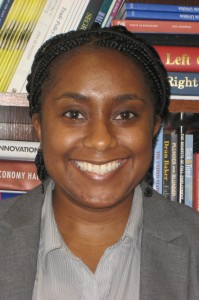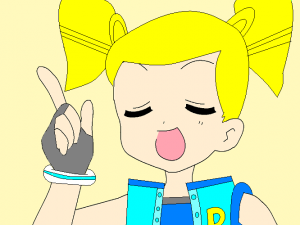 There’s a terrific chapter in financial journalist Helaine Olen’s new book Pound Foolish that debunks popular myths around gender and money fueling the personal finance literature aimed at women. Think women are less financially literate than men? According to research by Annamaria Luardi, a professor of economics and accountancy at George Washington University and the academic director of the Global Financial Literacy Excellence Center, men and women are both woefully financially illiterate. Think women aren’t as good with money? Research suggests that being made to feel that way may be the larger problem here.
There’s a terrific chapter in financial journalist Helaine Olen’s new book Pound Foolish that debunks popular myths around gender and money fueling the personal finance literature aimed at women. Think women are less financially literate than men? According to research by Annamaria Luardi, a professor of economics and accountancy at George Washington University and the academic director of the Global Financial Literacy Excellence Center, men and women are both woefully financially illiterate. Think women aren’t as good with money? Research suggests that being made to feel that way may be the larger problem here.
My daughter and son are only three and a half. But I’ve been thinking a great deal about how girls learn money—or rather, about how we don’t. As the recent Pew report shows, a record 40% of all households with children under the age of 18 now include mothers who are either the sole or primary source of income for the family. Our daughters are growing up in a world where they will be expected to be breadwinners, just like our sons.
But what are they learning, early on, about money, and how it works?
I sat down with Robin Patinkin, CFA, CFP®, a Principal with Cedar Hill Associates, LLC, an investment advisory firm serving high net worth individuals, families, and foundations. Over a large helping of watermelon in a Chicago apartment high up in the clouds, Robin and I discussed myths and realities around financial literacy and young girls.
Robin has over a decade of experience in investment management and financial planning with a comprehensive understanding of family interests and issues. Working intimately with clients as well as raising two sons and a daughter now in their twenties, she’s an expert in guiding individuals through financial life decisions. She’s something of a trailblazer herself, having majored in business in the 1970s (a time when few women did) and later going back to earn an MBA from Northwestern University’s Kellogg School of Management with a concentration in finance at age 45. She became a CFA charterholder, along with her eldest son, in 2012. She’s frequently called upon as a panelist, speaks on a variety of financial issues, and acts as an expert witness in divorce cases.
Here’s how our conversation went down.
DS: You’ve raised two boys and a girl. Did you notice any differences in the ways your children took interest in money?
RP: Yes. When each child turned ten years old, I had my first conversation with them about money and investing. I gave each an opportunity to invest in a stock they would understand at that young age as a consumer, and then we followed the stock together. There seemed to be a higher interest from the boys. That was the first signal. Later, when they were in high school, as part of the Illinois state public school graduation requirement, they each had to either take a consumer education course or pass an exam. Academically, my children are all very similar. My sons passed the exam with very little, if any, studying. Yet my daughter, who found the material uninteresting, asked for my help. I sat down with her and explained everything in the book page by page. She didn’t pass. We were both surprised.
DS: This story sounds like the stereotype. As a woman in the wealth management industry, how did this make you feel?
RP: A few years ago, I heard Marie Wilson speak about White House Project research that found a clear division in knowledge and acumen between boys and girls concerning financial literacy when they hit high school. This is the very age at which my children took the exam. As you can imagine, here sits a mother who herself beat the stereotypes, was one of the few women majoring in business during the 1970s, and viewed herself as a role model who had knocked down the barriers, I thought: how can this be happening with my daughter? I started to question what I had done wrong.
DS: What would you tell a mama like me to teach her preschoolers about dough?
RP: Now is the perfect time to start. Even Sesame Street is incorporating financial literacy in their curriculum. I would begin with the basics: put a piggy bank in the bedroom. Show them money, physically. Take them on a field trip to look at currencies of the past. Talk about bartering—use their toys—and explain how the money system developed. Go to a coin shop. When they’re a little older, perhaps even take a trip to the US Treasury in DC. Teach the basics of saving, spending, and giving. And don’t be afraid to really talk about money. There are many wonderful children’s books that teach what money is. One of my favorites is called The Go Around Dollar, by Barbara Johnston Adams and Joyce Audy Zarins. It takes a dollar bill and dissects what every symbol on it means. It’s important to start the conversation young: “Mommy is saving this for our vacation. Mommy is spending this on food.” Play games with money. When you’re in a store, have children count the change to make sure it’s correct. Money, at a young age, can be fun.
As your children grow, add different parts of financial literacy into the conversation. It’s important for parents not only to role model, but to talk about it. So at an early age, it’s about charity, saving, spending. Children have different personalities and will exhibit varying feelings about these things. As they get older, you build in more about your personal lives: your spending, your saving habits, good debt/bad debt, things that worry you. Talk about how we work to earn money and where the money goes. Do a field trip to a bank, explain credit cards and their use, define what an asset is. When the news is on, if there’s a financial term mentioned, define it for your children right there. Use the moment, whenever and wherever you can.
DS: In Pound Foolish Helaine Olen writes, “[T]here’s a fine line between making the [personal finance] industry more friendly to women and overtly condescending to them, and frankly, it is a line few have managed to tread successfully.” How do you think parents can be cognizant of occasional differences in attitudes between boys and girls around money, without condescending to the girls?
RP: I assumed, because I was in the business, that my children would understand equally, and there was no need to put effort into educating them differently at all. In retrospect, I probably should have spent additional time with my daughter, who seemed less engaged, thus piquing her interest more around money and investing. I should have realized back when she was 10 that another approach was required to interest my daughter on the subject. Selecting a stock wasn’t the right fit. One size does not fit all.
I often think about what I should have done differently with my daughter, and why her financial competence was less than her brothers’. I wonder if there was some sort of emotional hook or mode of presentation that I should have employed to involve her more in the conversation and learn the lessons. I could have offered her baby steps, assignments, and tasks in a simple non-threatening way.
DS: Your daughter is currently 23. What do you do now?
RP: Marie Wilson’s presentation was a trigger for me. I am now, and have been for the past few years, making a concerted effort to get my daughter up to speed. In her early years in college, my daughter started overspending. This was not intentional by the way, but more from a lack of understanding. So I then set the stage. My husband and I were fortunate enough to be able to put money aside to support college expenses, something so many American families struggle to fund. She had a credit card, her own checking account, and was given a reasonable monthly amount to live on. We covered tuition, and she was responsible for everything else. She learned how to budget and pay bills. She caught onto the lessons of personal finance she hadn’t yet somehow received. She’s now moving into her first apartment after college and working her first grown up job. She’s empowered, with me in the background still coaching, but she’s as responsible now as the boys.
DS: It’s been exactly 50 years since President Kennedy signed the Equal Pay Act into law yet women still make $.77 to the male dollar, prompting a renewed look at a legacy unfulfilled. So much of the problem, of course, is structural. But do you think an additional problem is that girls and women need to “lean in” more to our own financial education, or that the financial literacy industry isn’t effectively leaning out to us? Are we doing a good enough job teaching our girls, and are the methods employed successful?
RP: I think we’re failing on both accounts. There are outliers of success, and we can’t group all girls into one category. Yet I do believe these discrepancies in financial literacy are a problem across race and class. From my personal observation and experience working with girls, women, boys, and men, I suggest there is much to do. Yes, there are improvements since my college days, when there were few women in business, but the stereotypes persist, especially in much of the personal finance literature. I strongly believe it is our duty as mothers and fathers to recognize this shortfall and focus on the issue of financial literacy for our daughters, our sisters, our mothers, and ourselves. And it’s important for women like myself, in the industry, who have the education, the understanding, and the acumen, to work with our colleagues in the industry to combat this dilemma. My ultimate goal for my daughter—as for all our daughters—is that she pursues her career dreams and ambitions while living a life of financial freedom and independence, so that should a crisis take place, she is not destroyed.
Add your thoughts to the conversation, and be sure to check out Olen’s book. Is there a financial literacy gender gap, and if so, to what extent is the problem structural in nature? To what extent can parents and teachers play a role? Got questions for Robin? Feel free to leave them in comments here.






